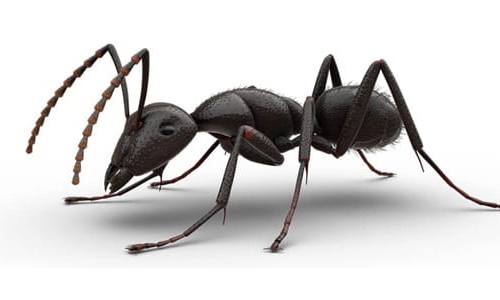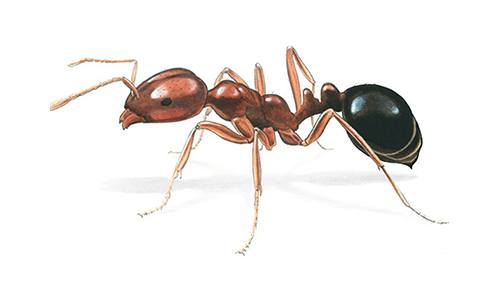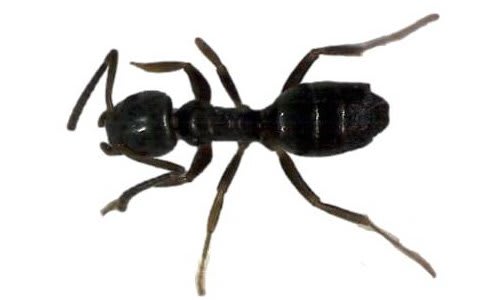
Ant Baiting Tips
If you have an active ant infestation, follow this guideline for the best use of ant baits and ant traps.
Ant Bait Stations Are Sometimes Called Ant Traps
Ant baits come in gel forms and station forms. Some people call the ant bait station form an ant trap. You may think that an ant trap catches the ant, but ant bait stations are open and allow ants to come and go to share their food. All ant baits are formulated to attract ants; they are combined with the toxin to kill the ants. In some of our ant bait kits, we do carry insect glue traps that ants will cross over and get stuck. These glue traps are used to monitor your ant control treatment.
Why Ant Baits Work
Baits are particularly useful on social insects such as ants and termites because these pests collect food and share it with their colony.
Because of this food-sharing ability, slow-acting insecticide baits are best for controlling ants; the ants carrying these baits do not die before returning to the colony. Some of these slower-acting ant baits offer a more permanent pest solution to get rid of ants than a typical broadcast of a repellent insecticide. The use of repellent insecticides is an inadequate method of repelling ants from a structure. Non-repellent insecticides, however, offer a solution to ant control. Also, non-repellent sprays are non-detectable by the foraging ants and will not interfere with the success of any baiting program.
Ants Feed On a Variety Of Foods
Ant feed on a variety of foods. They vary their dietary needs according to the needs of the colony and what food is available. The ants forage for the available food. Egg production and larval growth occur in the spring and early summer. At these times, many ant colonies will require a protein-based bait, such as Advance 375A or Maxforce Complete.
In natural settings, ants will eat insects during this time. Their dietary needs may shift during the summer and late summer to carbohydrates, such as Advion Ant Bait Gel or Optigard Ant Gel for the newly emerged adults. Ants share food by feeding each other, also known as trophallaxis.
Ant feed on a variety of foods. They vary their dietary needs according to the needs of the colony and what food is available. The ants forage for the available food. Egg production and larval growth occur in the spring and early summer. At these times, many ant colonies will require a protein-based bait, such as Advance 375A or Maxforce Complete.
In natural settings, ants will eat insects during this time. Their dietary needs may shift during the summer and late summer to carbohydrates, such as Advion Ant Bait Gel or Optigard Ant Gel for the newly emerged adults. Ants share food by feeding each other, also known as trophallaxis.
How To Apply Ant Bait Effectively
- Find the trails. The most effective bait placement is along the trails the Ants use while they're foraging for food.
- If you are not sure if multiple trails belong to the same colony, bait every trail that you find.
- Re-bait after the Ants have consumed the bait. Check on it daily. When the Ants are gone you can stop baiting in that location.
- If none of the bait has been taken, switch to a different type of bait. Consider the sweet-based baits if you are baiting with a protein/grease-based bait and vice versa.
- Have patience; it does take some time for the whole colony to die.
- Make sure to bait all trails (both inside and outside) to completely eliminate every Ant colony.
- Use bait stations such as Bait Station Plates to preserve and protect baits.
- Do not use repellent insecticides on or near baits. Non-repellent insecticides are fine.
- Do not bait on top of a mound. Bait around the base of the mound. If you bait on top, some of the foraging ants will not find it to bring it back to the queen.
- Remove all competitive food sources. Baits are less effective in areas with abundant rival food sources such as dumpsters, chicken houses, pet's feeding dishes, trash cans, etc. Another type of bait competition comes from aphids and scale insects producing honeydew on nearby vegetation. If you do notice a mold-like substance on your perimeter plants, treat those plants with an appropriate product (like Liquid Seven) to kill the aphids.
- Use fresh bait. Once the container is opened it needs to be used within 6 months to 1 year. After that, it becomes stale and unacceptable to the ants.
- Do not use repellent insecticidal sprays or dusts near the baits during baiting treatment. Contact or residual insecticide applied some time prior to or during the baiting treatments creates a hostile environment, suppressing foraging activity.
- Baits are most effective when temperatures are above 70°F. If daytime temperatures are in the 90s a nighttime application may be more effective. Place a small amount of bait or other food (try potato chips) close to a mound. If ants are present, they will emerge to forage for this food within 30 minutes if conditions are favorable.
- Do not use baits on wet surfaces such as grass with dew. This will make the bait less desirable to the ants.
- Broadcasting baits is normally more effective than mound treatments in reducing Fire ant populations. Broadcasting is more economical and less labor-intensive than individual mound treatments in areas with more than 40 mounds per acre.
- Be very thorough when baiting. If at all possible, locate every possible entry point. If the infestation is indoors, don't forget to bait outside as well.
- It is very important to remove any other food competition when applying ant baits.
- Leave the bait alone once the ants start feeding it (do not disturb ant activity).













